
Many hunters make a practice of grinding venison, which has the dual advantage of reducing the cost of meat-cutting and eliminating any concerns over the toughness of the animal. Ground venison is often used for sausages, such as thin, spicy venison sticks. These can be either hot- or cold-smoked, as desired. It's safe to say that most home cooks do not have the time or inclination to hunt deer and turn the meat into sausages. Some, however, may wonder how venison sticks are made.
Making Venison Sticks
For food-safety reasons, dress and chill your deer as soon as possible. Have the venison ground by a professional butcher or meat cutter in an approved facility. Most of venison's gamy flavor comes from the fat, so your butcher will trim it carefully from the meat. You'll need to replace that with pork fat, which is more neutral in flavor. Most cooks add a portion of pork shoulder as well, to make the sausage more moist. Once the proportions of fat and lean are correct, season the meat and stuff it into its narrow cylindrical casings.
Hot-Smoked Venison Sticks
Hot-smoking is a simpler process than cold-smoking, and therefore easier for home enthusiasts. To hot-smoke your sausages, hang them or place them on wire racks in your smoker. Prepare the smoker with water and hardwood chips, as directed by the manufacturer. Bring the smoker to a working temperature of 185 to 225 degrees Fahrenheit, and smoke the sausages until their internal temperature is at least 165 degrees Fahrenheit when tested with a meat thermometer. Cool the sausages, and package them for the refrigerator or freezer.
Cold-Smoked Venison Sticks
Cold-smoked venison sticks rely on drying or refrigeration to keep them food-safe. If you wish to dry the sausage, use a recipe that includes Tinted Curing Mix or a similar curing salt, which includes nitrites. Cold smokers generate their smoke in a separate firebox, allowing smoke but no heat to enter the smoking chamber. Cold-smoke your sausages at 120 degrees Fahrenheit or less for eight hours or more, until they are smoky enough. Dry the sausages in a cool place, such as an unused refrigerator, for up to 30 days until they are leathery and fully dried.
Storage
Hot-smoked venison sticks are fully cooked, and like any other cooked meat they require refrigeration or freezing. Package them in plastic wrap, freezer bags or butcher paper, squeezing out as much air as possible. If you own a vacuum food sealer, that works especially well. Cold-smoked venison sticks also require refrigeration or freezing, unless they are dried enough to be food-safe. Consult your county extension agent of the U.S. Department of Agriculture's Cooperative Extension System for detailed instructions on safely drying sausages. Properly dried venison sticks can be held without refrigeration in a cool, dry place for several months.
Related Articles

How to Cook Deer Bologna With a Smoker

How to Preserve Sausage

How Long Can Smoked Meat Last Without ...

How to Pickle Brine Sausage

How to Smoke Sausage in a Meat Smoker
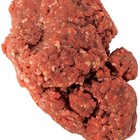
How to Dehydrate Ground Beef

How to Grill Ground Deer Sausage

How to Sugar Cure Bacon
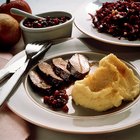
How to Make a Venison Rub

How to Cook Pancetta

Can I Cook Gyro Meat on a Rotisserie?
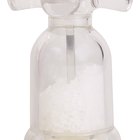
How to Dry Meat With Salt

How to Cook Venison Chop on a Grill
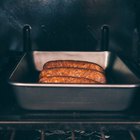
How to Cook Turkey Bratwurst in the Oven

How to Soak Deer Meat in Baking Soda
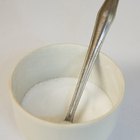
How to Brine a Smoked Beef Brisket

How to Roast Italian Sausage

How to Cook Elk Sausage
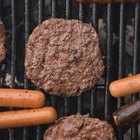
How to Cook a Frozen Beef Patty ...

How to Cook Freezer-Burnt Pork Chops
References
- "On Food and Cooking: The Science and Lore of the Kitchen"; Harold S. McGee; 2004
- "Garde Manger: The Art and Craft of the Cold Kitchen"; Culinary Institute of America; 2000
- University of Connecticut Department of Animal Science; Home Sausage Making, Second Edition; I.J. Ehr, et al.
- North Dakota State University Extension; The Art and Practice of Sausage Making; Martin Marchello, Ph.D., et al.; 2004
- University of Missouri Extension; Quality for Keeps; Keep Venison Safe From Field to Table; October 2004
Writer Bio
Fred Decker is a trained chef and prolific freelance writer. In previous careers, he sold insurance and mutual funds, and was a longtime retailer. He was educated at Memorial University of Newfoundland and the Northern Alberta Institute of Technology. His articles have appeared on numerous home and garden sites including GoneOutdoors, TheNest and eHow.
Photo Credits
Jupiterimages/Photos.com/Getty Images